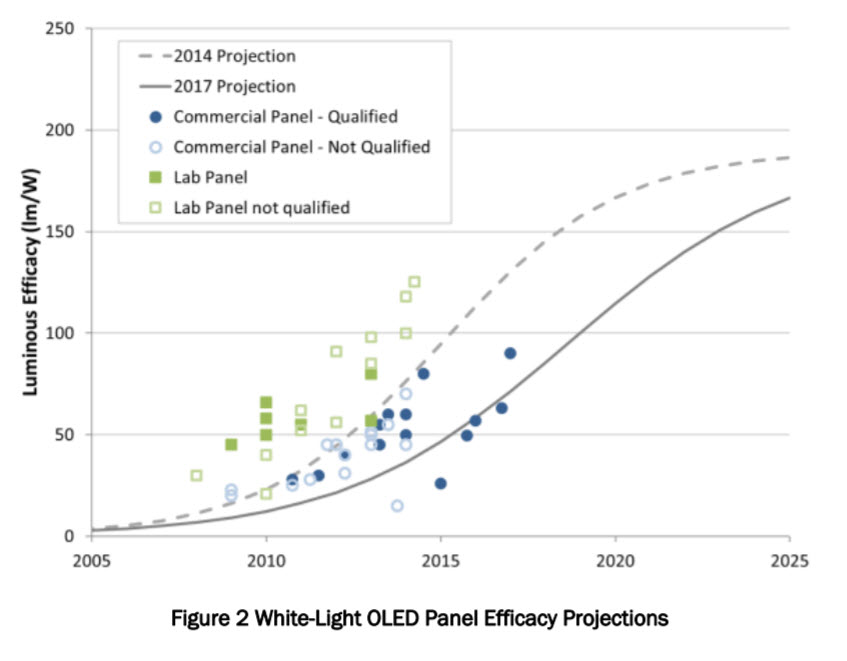The US Department of Energy has released its Solid-State Lighting R&D plan for 2017, containing its estimations regarding improvements in energy efficiency and projected power savings.
The document states that the DoE expects warm-white LEDs to be as energy-efficient as cool-white LEDs by the year 2025, with only a 10 lm/W gap between the two as early as 2020.
Colour-mixed LED is currently performing significantly worse, though the DoE believes that it has the potential to exceed the energy efficiency of phosphor-converted LED in the future.

However, the report goes on to state that OLED energy performance is lower than expected. The DoE previously predicted as far back as 2014 that OLED displays operating at above 100 lm/W would be widely available by now, but panel-makers have been so far unable to realise this outside of the laboratory.
 OLED Efficacy is not improving as quickly as hoped.
OLED Efficacy is not improving as quickly as hoped.
If the DoE’s current energy-efficiency expectations are met, the power saved would be enough to power 90% of US homes for an entire year.
Analyst Comment
Of course, this report is about lighting, but it highlights some of the reasons that microLED is potentially so attractive. It is proving hard to move OLEDs to the same efficiency as LEDs and that will have implications in displays as well. Power consumption and efficacy are going to be critical as the industry moves towards brighter and higher contrast displays. (BR)

